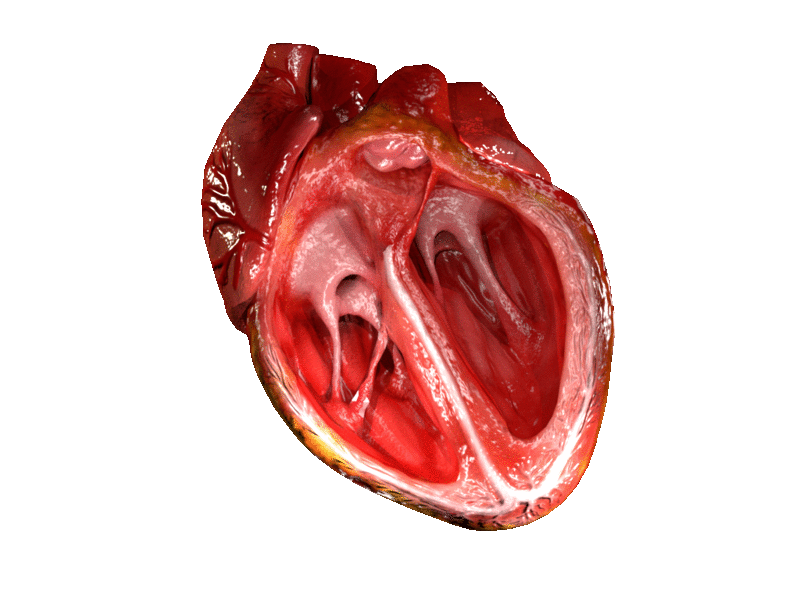Heart
The Human Heart
The Vital Organ: Understanding the Function and Importance of the heart.
Anatomy and Physiology of the Heart
At the core of our well-being and health stands our heart, an organ of utmost significance. To appreciate its vital responsibilities and functions, we must probe into the heart’s intricate anatomy and physiology.
Situated within the chest, slightly left of midline, the heart is a muscular organ with a weight ranging between 250-350 grams, almost as big as a clenched fist. It resides snugly between the lungs, encased by a protective layer referred to as the pericardium. The heart’s crucial task involves overseeing the circulation of oxygen-rich blood to all body parts, facilitated through an extensive web of blood vessels.
The heart is comprised of four compartments: a pair of atria and a pair of ventricles. Deoxygenated blood returning from the body enters the right atrium via the superior and inferior vena cava veins. From there, the blood gets directed to the right ventricle, whence it’s shuttled to the lungs for oxygenation. Oxygen-rich blood is then received by the left atrium from the lungs, coursed through the pulmonary veins. Once the oxygenated blood enters the left ventricle, it’s propelled to the body, distributed via the largest artery known as the aorta.
Deep within the heart exists an intricate valve system, ensuring blood travels in the right direction. Maintaining the efficacy of the circulatory system, these valves serve to prevent any blood backflow. Located between the right atrium and right ventricle is the tricuspid valve, while the mitral valve separates the left atrium and ventricle. Add that to the duo of semilunar valves, the pulmonary valve, and the aortic valve, which regulates blood flow from the heart to the lungs and assorted body parts accordingly.
The heart’s continuous rhythm and pulsation are governed by an intricate electrical conduction system. The electrical signals facilitating heart contractions originate from the sinoatrial (SA) node, often hailed as the heart’s natural pacemaker. This signal travels through atria and reaches the atrioventricular (AV) node, thence causing the ventricles to contract and pump blood.
Acquaintance with the heart’s anatomy and physiology is crucial to underline its profound contribution to our health and well-being. An optimally functioning heart ensures nutrient-rich and oxygen-infused blood is transported to all parts of our body while also eliminating waste. Apart from maintaining blood pressure, the heart also has a pivotal role to play in hormone circulation and immune cell transportation. An impaired heart can hinder tissues and other organs from obtaining the essential nourishment required for optimal functionality.
In summary, the heart’s elaborate anatomy and physiology play a pivotal role in the overall function of the body. Its four chambers, electrical conduction system, valves, and constant pumping action ensure efficient oxygenated blood circulation throughout our bodies. Understanding the heart’s precise structure and the part it plays underscores the need for heart health to ensure overall well-being.
The Importance of a Healthy Heart
Having a healthy heart is crucial for maintaining overall good health and ensuring the wellbeing of your body. It plays a significant role by pumping blood rich in oxygen throughout the entire body, thus supplying the essential nutrients and oxygen required for the efficient function of all organs and tissues. So, recognizing the importance of heart health is vital to stave off cardiovascular diseases and maintain good cardiac health.
One of the major benefits of a robust heart is its capacity to facilitate proper blood circulation in the body. By pumping blood effectively, oxygen and nutrients are able to reach every nook and corner of the body, including crucial organs, the brain and muscles. This boosts complete wellness and sustains optimal energy levels and function across the system.
Further, a hearty heart contributes to the overall endurance and resilience of the body. Regular physical activity and leading an active lifestyle form the backbone of possessing a strong heart. Physical exercise helps reinforce the heart muscle, making it proficient at pumping blood. This brings about an increase in stamina and lessens fatigue, thereby enabling individuals to partake in activities for extended periods without feeling worn out.
Additionally, a sound heart plays an instrumental role in efficiently removing waste products from the body. As blood travels, it carries metabolic waste and carbon dioxide to the lungs and kidneys for disposal. An efficient heart ensures that these byproducts are transported adequately to the relevant organs for effective elimination, thereby assisting in detoxification.
A healthy heart is also pivotal in mitigating the risk of various cardiac diseases and conditions. Heart diseases, like coronary artery disease, heart attacks and heart failure are the foremost causes of illness and death globally. Adopting heart-friendly habits, such as a balanced diet, regular exercise, stress management, and avoiding unhealthy habits like smoking and excessive alcohol consumption, can drastically reduce the risk of these conditions.
Furthermore, mental and emotional wellbeing also benefits from a healthy heart. Adequate blood flow and oxygen provision to the brain enhance cognitive abilities and memory. Research has also shown a lesser propensity towards depression and anxiety among those with healthy hearts. This connection between heart and brain underscores the importance of cardiovascular health for overall mental wellbeing.
To sum up, recognizing the importance of heart health is crucial for living a wholesome and robust life. A healthy heart ensures proper blood circulation, enhances physical endurance, aids in waste elimination, mitigates the risk of heart diseases and fosters mental health. By proactively maintaining heart health, individuals can bolster their quality of life and achieve comprehensive health and wellness.

